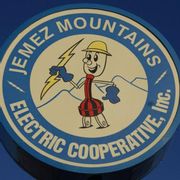
Electricity is a highly efficient energy source. These days, we take its presence for granted—expecting that every time we flip a switch, the lights will come on. Rarely, do we stop to ponder where it comes from or how humans harnessed it. The guide below takes a look at the history of how electric services came to power the world.
When Was Electricity Discovered?
We all know the story of Benjamin Franklin and his famous electrical experiment in 1752—a test meant to show that lightning was made of electricity. This was centuries after people first understood they could create static by rubbing certain materials together and a few decades before Alessandro Volta developed a device capable of sustaining an electric charge—arguably, the first battery.
In 1831, an inventor named Faraday invented the first electric motor that used a magnet and a wire to create current. Following this, many scientists—among them Thomas Edison and Joseph Swan—began the quest that would result in the incandescent filament lightbulb. The former would then go on to open the first central power plant in the U.S.
How Did Electric Services Change the Modern Era?
 Prior to electricity, because of the lack of lighting, people could not be active at night unless they could afford kerosene lamps. Additionally, without electricity for refrigeration, people couldn’t efficiently store meat or dairy products. Also, farmers had to pump water by hand from wells to irrigate land and it was almost unbearable to live in hot climates without air conditioning. In these ways, electric services have expanded not only where, but how, people live. Later inventions that use electricity were also monumental, including TV, computers, and the Internet.
Prior to electricity, because of the lack of lighting, people could not be active at night unless they could afford kerosene lamps. Additionally, without electricity for refrigeration, people couldn’t efficiently store meat or dairy products. Also, farmers had to pump water by hand from wells to irrigate land and it was almost unbearable to live in hot climates without air conditioning. In these ways, electric services have expanded not only where, but how, people live. Later inventions that use electricity were also monumental, including TV, computers, and the Internet.
How Is Electricity Generated Today?
Electricity is generated when large turbines are turned quickly. This spinning, in turn, causes large magnets to turn in copper coils in the generator. The spinning magnets cause electrons to move along the wire, creating electricity. So, how do we get the turbines to spin? In the U.S., the primary electricity generation sources are fossil fuels—natural gas, coal, petroleum, and other gases. These account for over 63% of the electricity generated in the country. More than 19% is from nuclear energy with the remaining 17% from renewable sources such as hydropower, wind, solar, biomass, and geothermal.
If you are looking for a dependable electric company, reach out to Jemez Mountains Electric Cooperative, located in Hernandez, NM. Since 1947, they have been serving Rio Arriba, Santa Fe, San Juan, McKinley, and Sandoval counties, striving to find better and more affordable means of supplying reliable electric power to their customers. Visit their website to learn more about their offerings. Call (505) 753-2105 with questions or for more information.
About the Business
Have a question? Ask the experts!
Send your question

